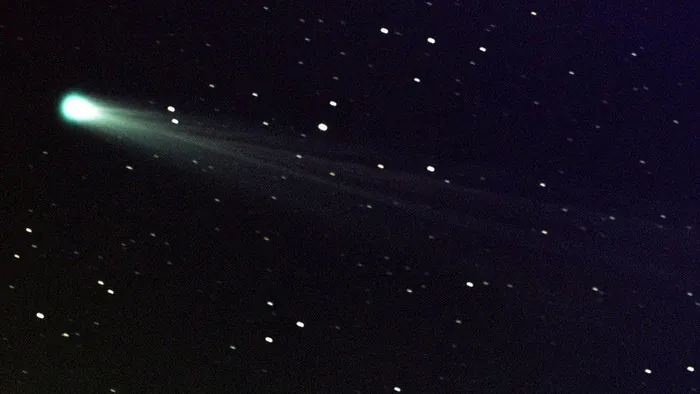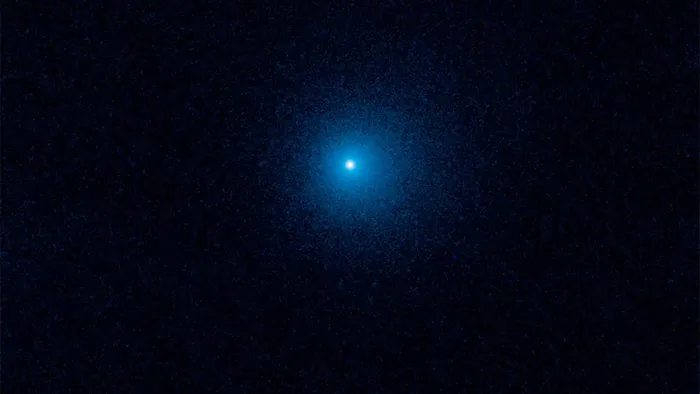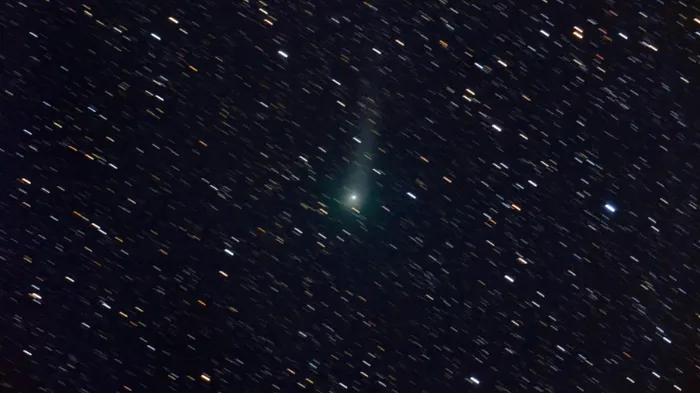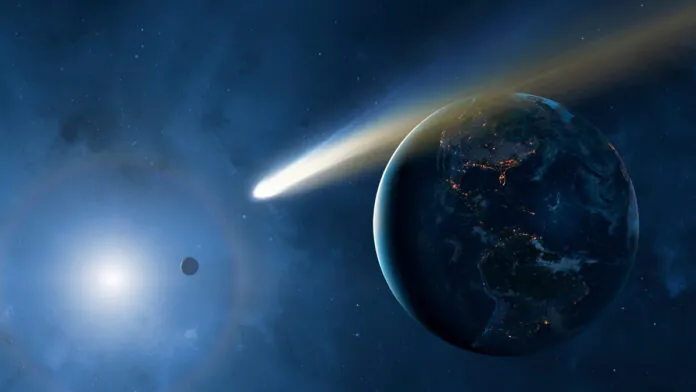© ROOT-NATION.com - Use of content is permitted with a backlink.
The K2 comet, one of the most distant “active” comets ever discovered, will fly past our planet this week, making its first-ever journey from the far reaches of the Solar System to the Sun. Astronomers are watching the mysterious icy ball with interest, making new and often unexpected discoveries at every stage of the journey.
David Jewitt, an astronomer at the University of California, Los Angeles, has published several papers on K2 comet and was one of the first astronomers to study the object after it was discovered by the PANSTARRS Panoramic Survey Telescope and Rapid Response System in Hawaii in May 2017. At that time, the comet was about 17 times farther from the Sun than Earth.

Even at this distance between the orbits of Saturn and Uranus, the comet emitted what scientists call a coma: a faint halo of gas extending 130,000 km into space. This coma forms when frozen material on a comet sublimates, or goes from a solid state directly to a gas. It was this halo that surprised astronomers. This deep in the solar system, the solar radiation is too weak to sublimate the frozen cometary material.
The astonishment of astronomers only increased when they discovered this halo in images taken even before the official discovery, when the comet was 23 astronomical units from the Sun, orbiting the outermost planet of the Solar System, Neptune.
Jewitt then determined that K2 must have been active for several years when the first picture was taken. Inverse simulations showed that the comet should have ejected gas at about 35 average distances from the Sun, deep within the Kuiper Belt, a disk of debris, space rocks and comets beyond Neptune’s orbit. “At 35 AU from the sun, temperature is probably something like 40 degrees above absolute zero,” Jewitt said. (Absolute zero corresponds to minus 460 degrees Fahrenheit, or minus 273 degrees Celsius. At this temperature, the natural movement of atoms stops). “So we know that water is as solid as rock there. It couldn’t be responsible for the activity that we saw at those large distances.”

Comet C/2017 K2 was captured by PANSTARRS on June 18, 2022. Since then, it has become a source of exciting discoveries, surprising scientists with its unexpected behavior. But Jewitt believes that what astronomers are seeing in K2 is far from unique. Rather, the behavior of the comet appears to be typical of comets making their first flight to the Sun —it’s just that we haven’t been able to observe them before.
“What makes this comet special is that it was discovered early,” Jewitt said. “We’ve been able to follow the way the comet changes with distance from the sun over a much larger range than has ever been done before.”
According to Jewitt, comet K2 is even further away than the Kuiper belt. The comet’s original home was most likely the Oort Cloud, a repository of comets and planetary fragments that extends from 2,000 to 200,000 AU from the sun. There, surrounded by billions of other frozen snowballs and space rocks, K2 slept for billions of years until it received an unexpected gravitational jolt, probably from a star passing by the outer reaches of the solar system. This push sent K2 on a journey that we can now watch in real time.

Jewitt believes that the James Webb Space Telescope, whose first image was presented to the public on July 11, may shed more light on the mysterious K2 comet. The telescope’s powerful spectrometers can reveal much more detail about the comet’s chemical composition, including the strange composition of its dust.
You can also help Ukraine fight with Russian occupants via Savelife or via an official page of the National Bank of Ukraine.
- This is the first full-color photo of the universe, shot on Webb
- You can watch the July supermoon online


